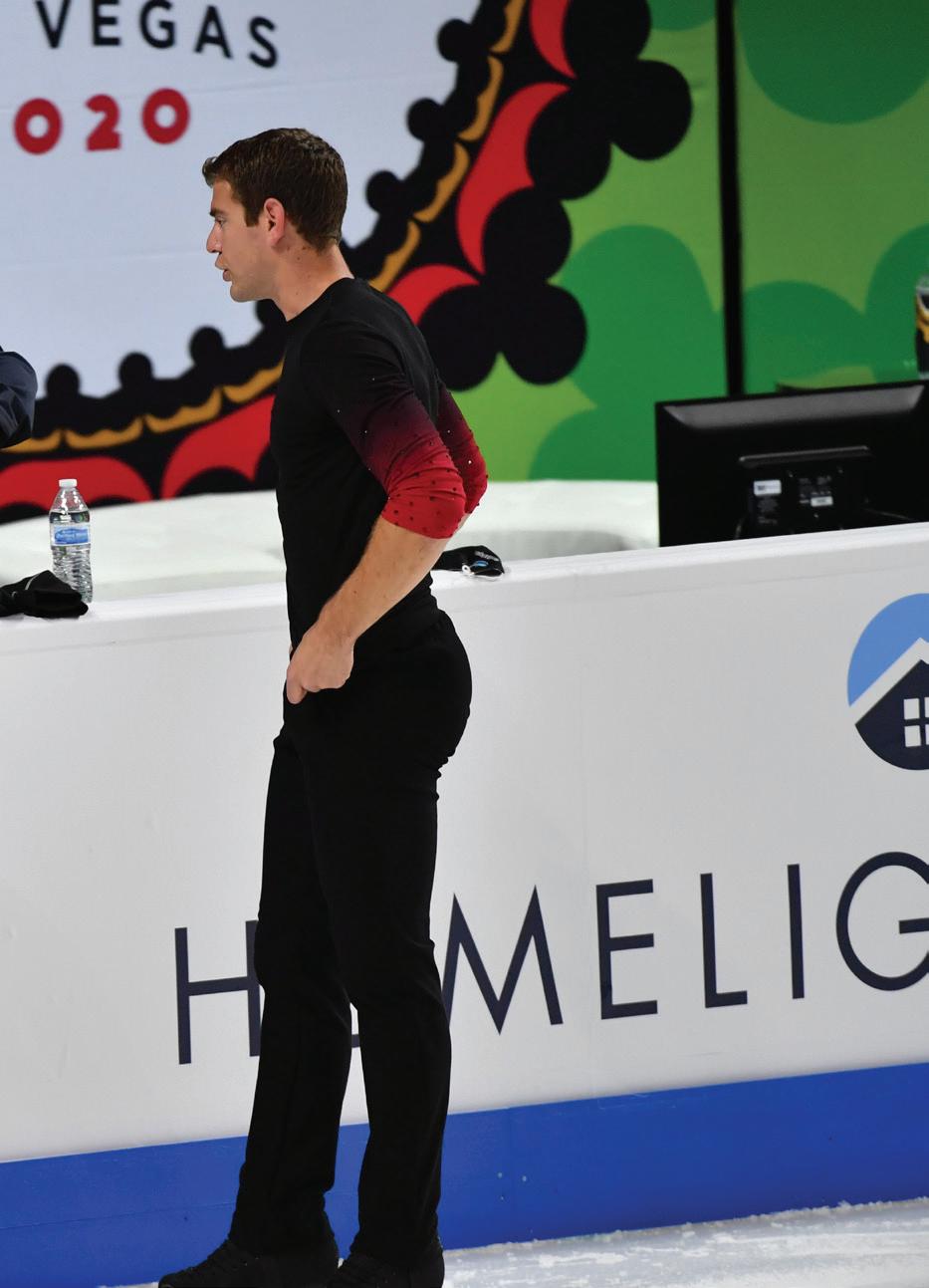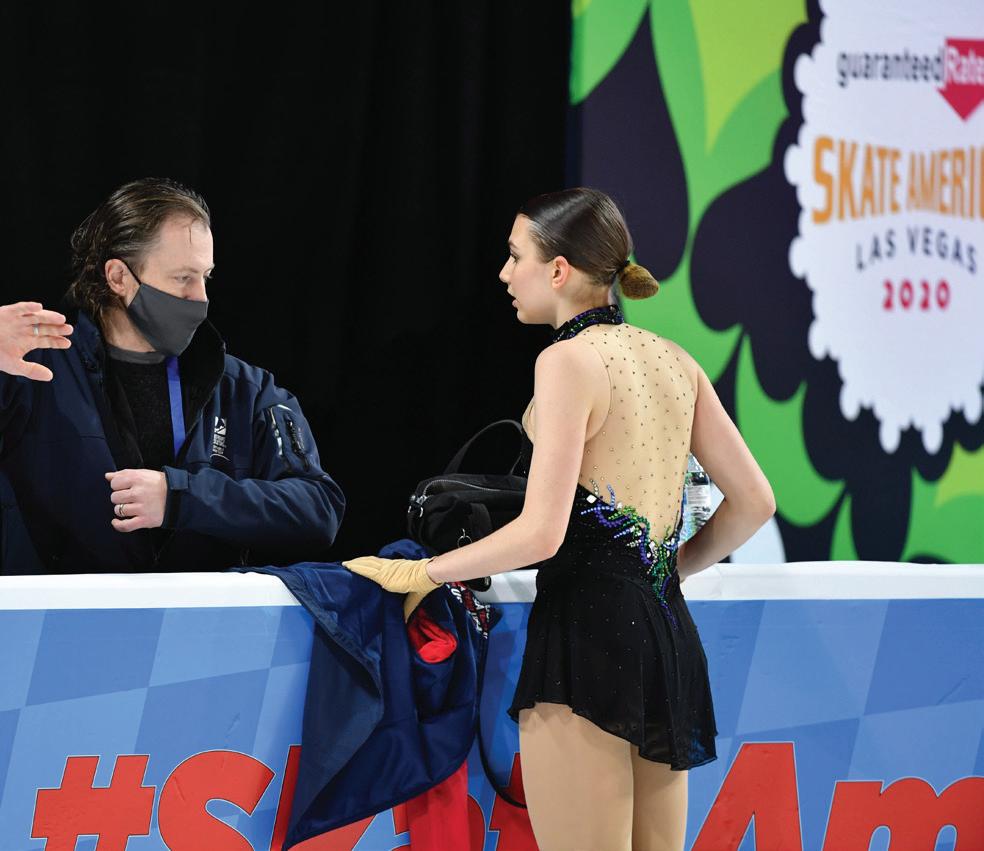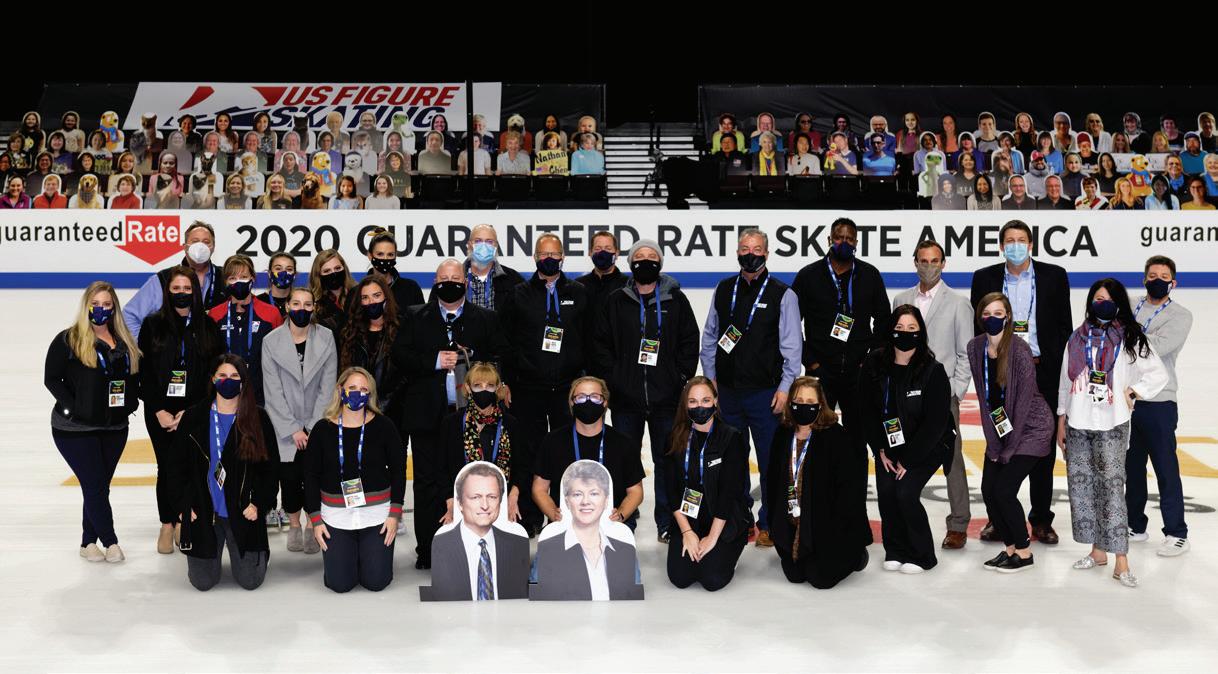
5 minute read
The Skate America “Bubble”
By Terri Milner Tarquini | Photos by Jay Adeff/U.S. Figure Skating
The 2020 Skate America in-person competition was a victory for Mariah Bell, Nathan Chen, Alexa Scimeca Knierim and Brandon Frazier, and Madison Hubbell and Zachary Donohue, but it was especially a victory for the sport of figure skating.
Advertisement
November 10 was 14 days after the skaters, coaches, officials and staff left Las Vegas and the tracking window closed, reporting zero positive COVID cases.
The Skate America “bubble” was a success.
“There’s a big sigh of relief,” said Bob Dunlop, Senior Director of Events for U.S. Figure Skating. “We knew we could do it, but to actually do it — and do it completely safely — is a wonderful feeling.”

Gracie Gold waits to take the ice
Jay Adeff/U.S. Figure Skating
Skate America, with a 60-skater maximum entry, was the perfect sized competition to test the proof of bubble concept, which had to be approved by the Nevada Gaming Control Board, as the Orleans Arena is adjacent to the hotel and considered casino property.
“The bubble took shape with private rooms and walkways and elevators,” Dunlop said. “It was approved and came to fruition and there has been wonderful feedback.”
Master-rated Tammy Gambill, a coach of over 30 years currently at the Broadmoor Arena in Colorado, had three competitors at the event: Karen Chen, Camden Pulkinen, and Audrey Shin.
The overview version of the bubble was this: athletes, coaches and officials were each picked up at the airport and transported to the arena, where COVID tests were administered and boxed meals were picked out. From there, participants used elevators and a walkway that was specifically set aside for Skate America to get to their rooms, where they waited until their test results came back negative. After that was established, there were masks and social distancing and temperatures taken to enter the arena and an app to disclose any symptoms.
“It was all so well-organized, and the kids were so excited to be there and so thankful to have the opportunity to compete,” Gambill said. “They even had clapping and audience noise so there wasn’t just silence when they finished their routines. I can’t say enough about how U.S. Figure Skating pulled this off. The fact that they made it happen is mindboggling. And there was never a second that I didn’t feel safe and comfortable being there.”
With no spectators allowed and only athletes under the age of 18 able to have a chaperone present, skaters performed in front of a cut-out “audience,” that even included the Geico gecko — and a judging panel that looked different from previous Skate Americas.
“While the technical panel is assigned by the ISU, usually the judging panel is a true international panel, with one judge from each represented country,” Dunlop said. “But we decided that the Grand Prix series would have to be a domestic-only event, so no international judges and an all-U.S. Figure Skating officials’ panel. The only participants from abroad were a few international skaters who live and train in the U.S.”

Todd Sand and Jenni Meno-Sand with Alexa Scimeca Knierim and Brandon Frazier
Jay Adeff/U.S. Figure Skating

Todd Sand and Jenni Meno-Sand with Alexa Scimeca Knierim and Brandon Frazier
Jay Adeff/U.S. Figure Skating
The all-U.S. Figure Skating edict extended to the running of the entire event.
“For the first time ever, there were no outside volunteers,” Dunlop said. “U.S. Figure Skating staff descended en masse and were ice monitors, played music, anything that needed to be done. We had to limit the footprint in the bubble, so everyone rolled up their sleeves and lent a hand where needed. It was a long week, but very, very satisfying.”
It took a village and all participants heeded the call. U.S. Figure Skating staff, coaches, and athletes were supported by the PSA in their efforts to produce a safe, competitive opportunity at Skate America 2020.
“It was an amazing experience and a true cooperative effort,” Dunlop said. “The athletes, the coaches and the officials all had a huge role in this being a success. We had many more touch-point calls with all of those groups than ever before in preparation. As an organization making an event happen, I am so proud of everyone’s willingness to cooperate and the level of support from the athletes, coaches, officials and staff.”

Coach Jeremy Allen with skater Finley Hawk
Jay Adeff/U.S. Figure Skating
With 2020 Skate America now in the books, there is plenty of relief, satisfaction and an eye on the future.
“I think everyone really took pride in the fact that we were able to adapt and adjust,” Dunlop said. “No matter the circumstances, we proved we can still be elite athletes and coaches.”
For an insider’s view of the Skate America 2020 bubble, Mariah Bell posted a video that can be found on the Team USA Facebook page.
The information in this article was current at the time of article submission and may not reflect any changes made to the U.S. Championships plan after Nov 1, 2020.
Looking Ahead

Jay Adeff/U.S. Figure Skating
Using Skate America as a pattern, U.S. Figure Skating announced on November 9 that the 2021 U.S. Figure Skating Championships would be relocated from San Jose, California, to the Orleans Arena in Las Vegas – the same venue that successfully hosted 2020 Skate America at the end of October.
In another COVID-related pivot, the lead-up to the U.S. Figure Skating Championships, already scheduled to look different than ever before, has had another change.
Due to many recent surges of the virus across the country, the 2021 U.S. Championship Series will be conducted virtually, still allowing senior and junior skaters to qualify for the in-person U.S. Figure Skating Championships.
The U.S. Figure Skating Championships will use Skate America’s operational plan as a blueprint with the senior-level competition taking place from January 11-17 and the junior-level competition happening from January 19-21. As with Skate America, there will be no spectators, but fans can watch on NBC, NBCSN and Peacock Premium.








